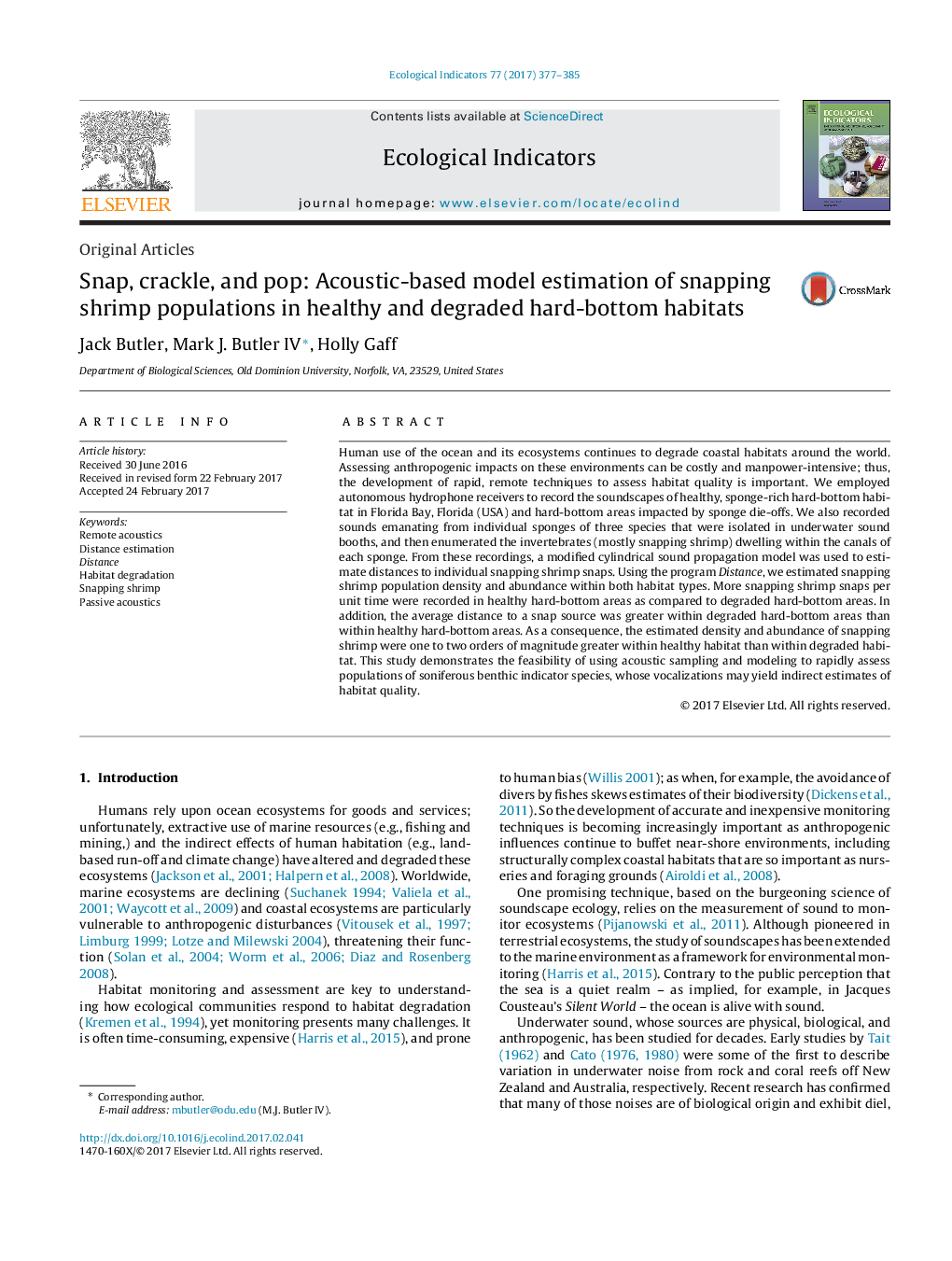| Article ID | Journal | Published Year | Pages | File Type |
|---|---|---|---|---|
| 5741741 | Ecological Indicators | 2017 | 9 Pages |
â¢Passive acoustics and distance sampling were used to estimate snapping shrimp density.â¢Distances to snapping shrimp snaps were estimated from single hydrophone recordings.â¢Snapping shrimps are less abundant in degraded areas compared to healthy ones.â¢This method provides a rapid technique to monitor habitats and populations.
Human use of the ocean and its ecosystems continues to degrade coastal habitats around the world. Assessing anthropogenic impacts on these environments can be costly and manpower-intensive; thus, the development of rapid, remote techniques to assess habitat quality is important. We employed autonomous hydrophone receivers to record the soundscapes of healthy, sponge-rich hard-bottom habitat in Florida Bay, Florida (USA) and hard-bottom areas impacted by sponge die-offs. We also recorded sounds emanating from individual sponges of three species that were isolated in underwater sound booths, and then enumerated the invertebrates (mostly snapping shrimp) dwelling within the canals of each sponge. From these recordings, a modified cylindrical sound propagation model was used to estimate distances to individual snapping shrimp snaps. Using the program Distance, we estimated snapping shrimp population density and abundance within both habitat types. More snapping shrimp snaps per unit time were recorded in healthy hard-bottom areas as compared to degraded hard-bottom areas. In addition, the average distance to a snap source was greater within degraded hard-bottom areas than within healthy hard-bottom areas. As a consequence, the estimated density and abundance of snapping shrimp were one to two orders of magnitude greater within healthy habitat than within degraded habitat. This study demonstrates the feasibility of using acoustic sampling and modeling to rapidly assess populations of soniferous benthic indicator species, whose vocalizations may yield indirect estimates of habitat quality.
